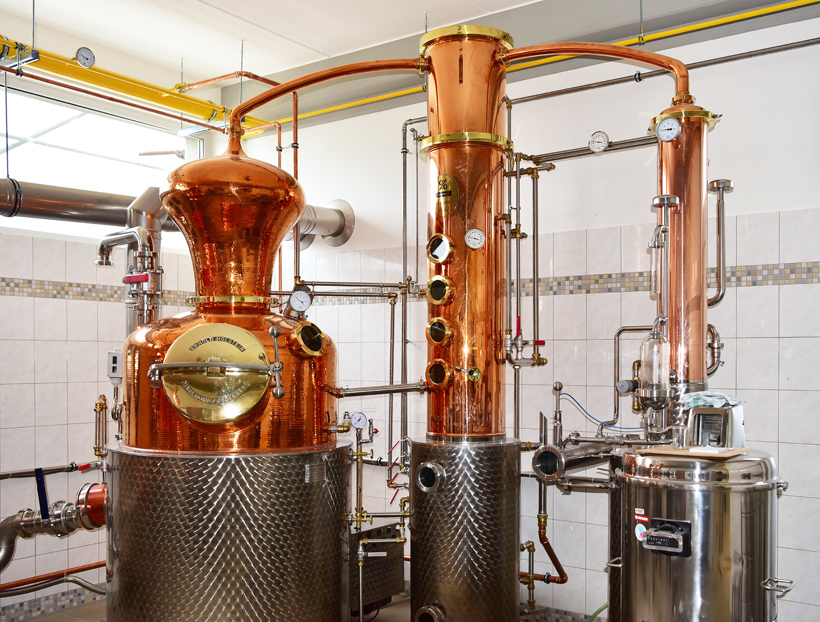ABSINTHE DISTILLATION

How Absinthe Is Made
Making absinthe is a complex process involving 3 important steps: the maceration, the distillation and the coloration. It’s impossible to obtain a fine Absinthe in one day as all 3 steps are achieved over 3 days. This does not include the wormwood stripping, the bottling and labelling.
Step 1 – Maceration

A distillation starts with the quality herbs themselves. Each dried herb is carefully measured to adhere to a precise recipe. Small quantities of herbs are weighed with professional electronic scales.
Once all the herbs are ready, alcohol and water are added to alembic. The herbs are then added and mixed with the alcohol/water and the alembic is sealed. The alcohol and herbs will macerate at room temperature over night.
Step 2 – The Distillation

Next, the alembic is heated to begin the distillation process. It takes around 2 hours to heat the alembic to the required temperature.
The distillation process will take an entire day during which the temperature of the alembic is carefully monitored. If too cold, no absinthe will be produced. If too hot, the herbs are “burnt” and not only is the absinthe ruined but there is a risk of damaging the alembic.
Another critical step during the distillation is the monitoring of “heads” and “tails”. During distillation, heads are what come out of the alembic first and tails are what come out last. Both are unwanted and only the clear and clean distillate is kept. Around 4 liters of heads are discarded and around 25-30 liters of tails are collected in a tank for future re-distillations. The very last tails are discarded.
Step 3 – Coloration
Coloration is accomplished by maceration of a percentage of the clear distillate with the herbs used for coloring. They can be added loose or in  “tea bags” which makes filtration afterwards easier.
“tea bags” which makes filtration afterwards easier.
The alembic is then sealed and heated until the surface of the copper lid becomes too hot to comfortably touch (from 50-55°c). The mixture is then allowed to cool before being removed and filtered.
The coloration step lasts only 1 or 2 hours. An over-colored absinthe can easily get unbalanced and unpleasant. The next step is the filtration which removes all sediments left by the coloration step.
The colored absinthe is then mixed back with the remaining clear distillate to make the final product. Only water is added right before bottling the absinthe to bring the alcohol percentage to the desired amount.
|
